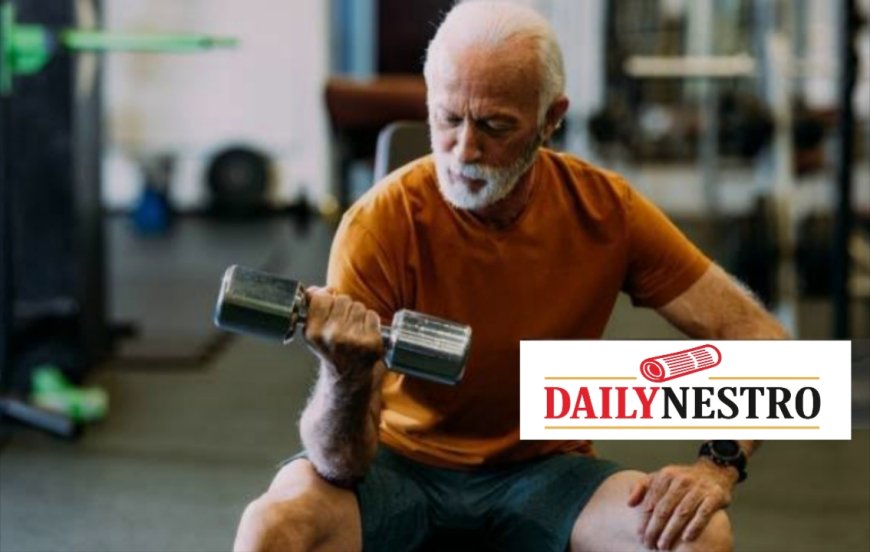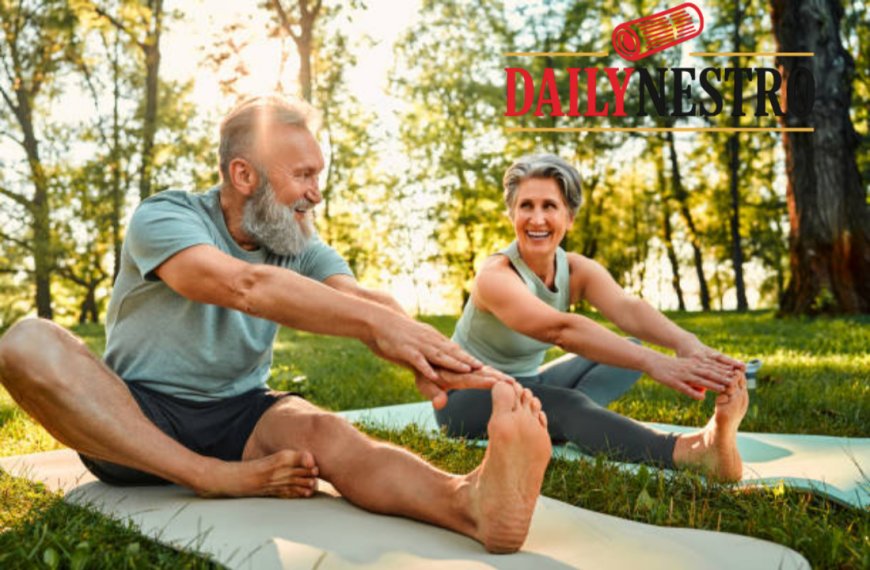5 STANDING EXERCISES THAT REVERSE MUSCLE LOSS AFTER 40
“Discover 5 simple standing exercises that help reverse muscle loss after 40. These quick, equipment-free moves strengthen your body, improve balance, and keep you active and independent for life.”


5 Standing Exercises That Reverse Muscle Loss After 40
As we age, our bodies go through natural changes—one of the most significant being muscle loss, also known as sarcopenia. This gradual decline in muscle mass often begins after the age of 40 and can lead to reduced strength, slower metabolism, poor balance, and even a higher risk of falls. The good news? You don’t need an expensive gym membership or fancy equipment to fight back. With just a few minutes a day, you can restore strength, improve mobility, and maintain independence well into your later years.
In this article, we’ll cover five simple standing exercises that are specifically designed to reverse muscle loss after 40. These moves are safe, effective, and suitable for beginners or anyone looking to stay active without complicated workouts.
Why Muscle Loss Happens After 40
Once you hit your 40s, your body naturally begins to lose lean muscle mass at a rate of about 3–5% per decade. Lifestyle factors such as long hours of sitting, lack of physical activity, poor nutrition, and stress can accelerate this decline. Without intervention, this process can result in frailty, joint pain, and difficulty performing everyday tasks.
The guidelines ?Strength-based exercises that focus on functional movements. By practicing these regularly, you can rebuild muscle, boost metabolism, and protect your bones and joints.
1. Squats :Strengthen Your Legs and GlutesSquats are one of the most effective full-body moves to reverse muscle loss in the lower body. They strengthen your thighs, glutes, and core while improving balance and mobility.
How to do a perfect squats:
a.Stand tall with feet shoulder-width apart.
b.Lower your body as if sitting in a chair, keeping your back straight and knees behind your toes.
C.Rise back to standing and repeat 10–15 times.
Advantages :Builds leg power, supports joint health, and makes daily movements like climbing stairs easier.
2. Calf Raises : Improve Balance and Ankle Strength
Calf muscles often weaken with age, leading to poor stability. Calf raises are simple yet powerful for keeping your ankles strong and your balance sharp.
How to achieve a perfect calf raises:
a.Stand with feet hip-width apart.
b.Slowly rise onto your toes, lifting your heels off the ground.
C.Hold for 2–3 seconds, then lower down.Repeat 12–15 times.
Advantages :Strengthens calves, enhances balance, and reduces the risk of falls.
3. Side Leg Lifts : Support Hips and Posture,Side leg lifts target the hip abductor muscles, which are crucial for posture, stability, and preventing back pain.
How to do it:
a .Stand tall while holding a chair or wall for balance.
b.Slowly lift one leg out to the side without leaning your torso.
C.Lower it back down and repeat 10–12 times per side.
Advantages :Strengthens hips, improves posture, and reduces hip joint stiffness.
4. Arm Raises : Keep the Upper Body Strong ,Many people forget that upper-body strength is just as important as lower-body strength. Arm raises keep your shoulders, chest, and back active.
How to perform Arm raises:
a.Stand tall with arms by your side.
b.Slowly lift your arms straight up to shoulder height, then lower back down.
c.Add light weights or water bottles for extra resistance.
Do it 10–12 repetitions.
Advantages: Improves upper-body mobility, prevents shoulder stiffness, and supports daily activities like lifting groceries.
5. High-Knee March :Boost Endurance and Coordination .This fun, cardio-style move works multiple muscles while improving stamina and coordination.
How to do it:
a .Stand with feet hip-width apart.
b.March in place, bringing your knees up toward your chest.
c.Swing your arms naturally as you march.Continue for 30–60 seconds.
Advantages: Boosts cardiovascular endurance, engages the core, and improves overall Coordination
Tips for success
Start slow: Perform 2–3 rounds of these exercises, then increase as your strength improves.
Consistency matters: Just 10–15 minutes daily can make a huge difference.
Pair with good nutrition: Eat enough protein to support muscle growth and repair.
Listen to your body: Modify moves if you experience discomfort, and consult a doctor before starting if you have health concerns.
Finally,Muscle loss after 40 doesn’t have to slow you down. By practicing these five simple standing exercises, you can stay strong, active, and independent for years to come. The best part? You don’t need a gym or heavy equipment—just your body, determination, and a few minutes a day.

Staying fit after 40 is about building strength, protecting your joints, and maintaining energy for the things you love. Start small, stay consistent, and watch your body grow stronger with each passing week.







